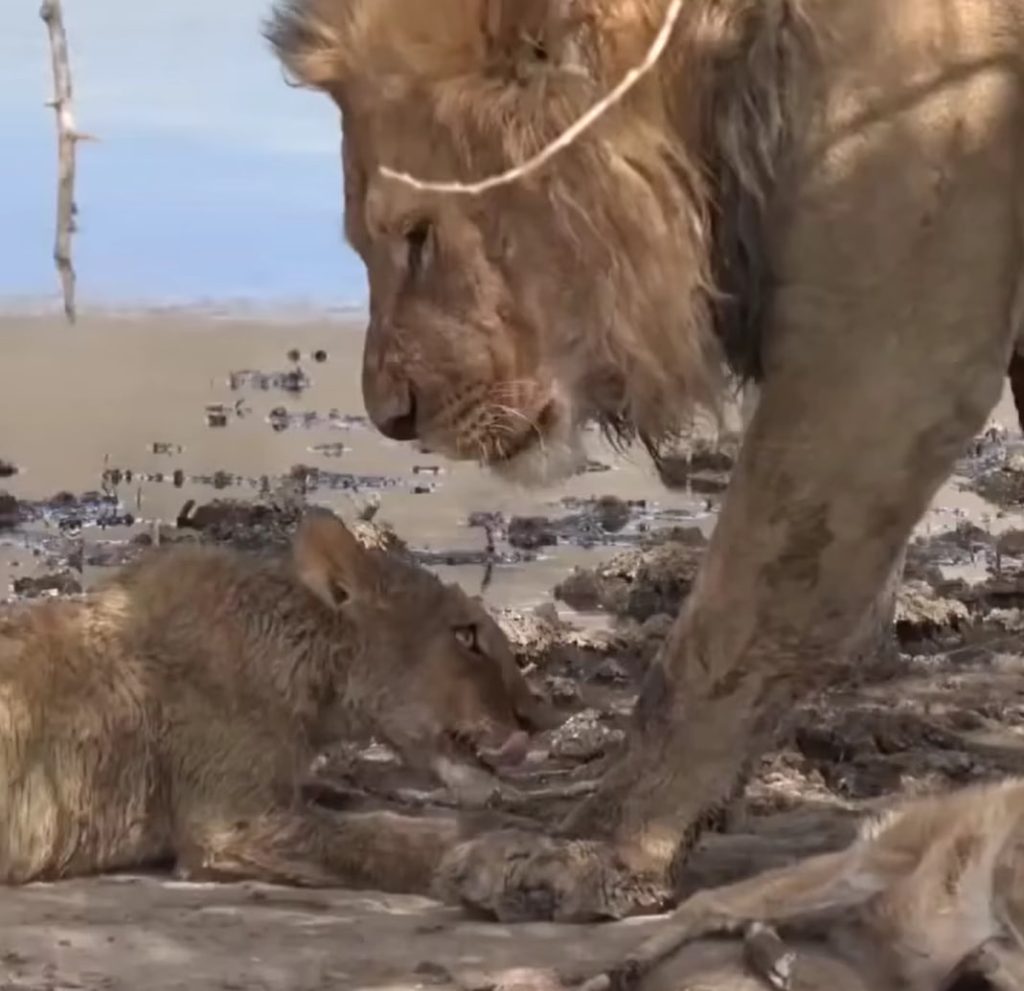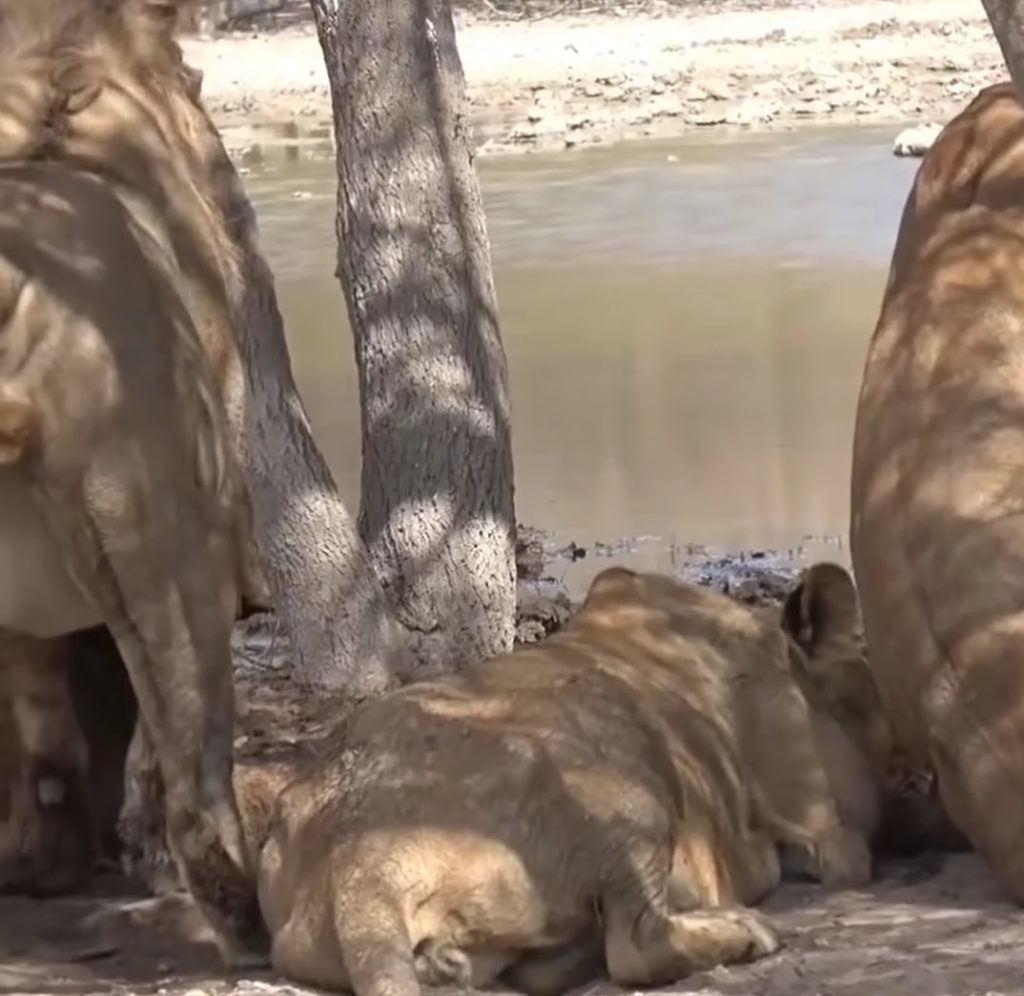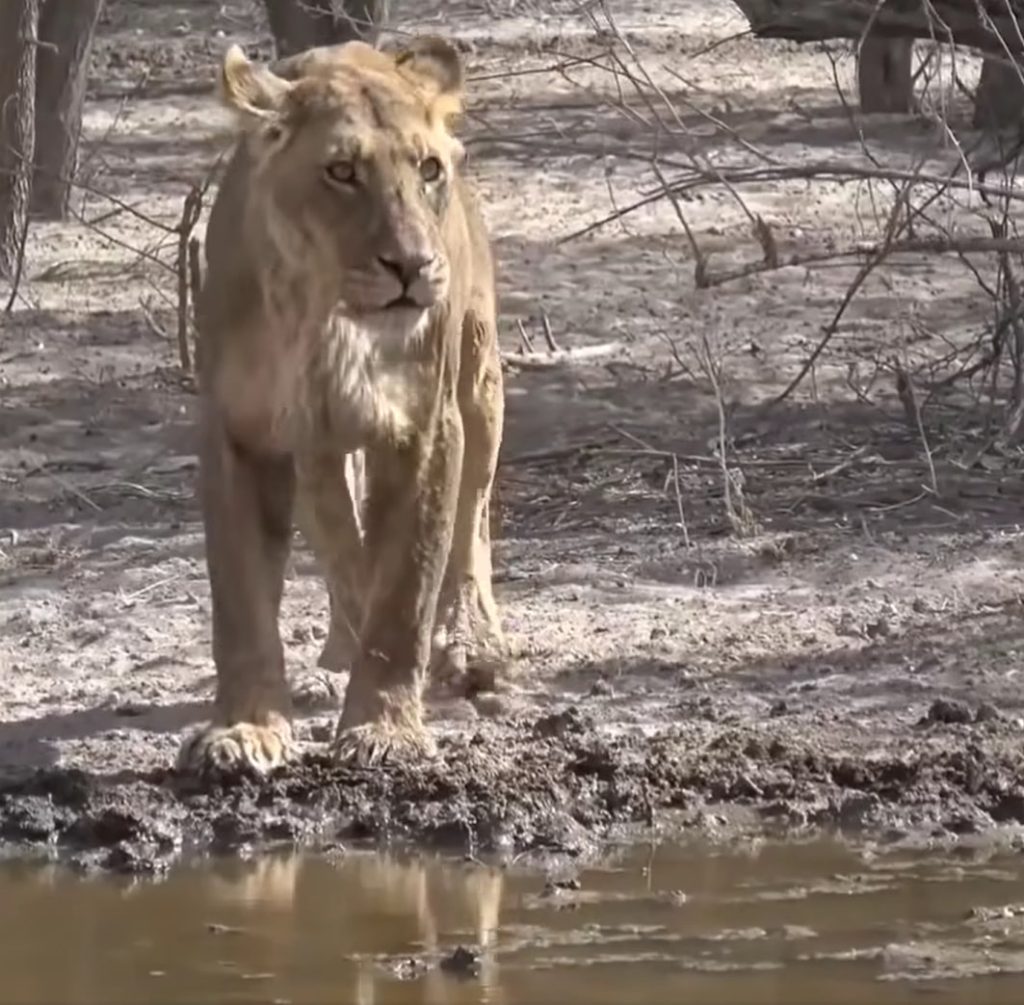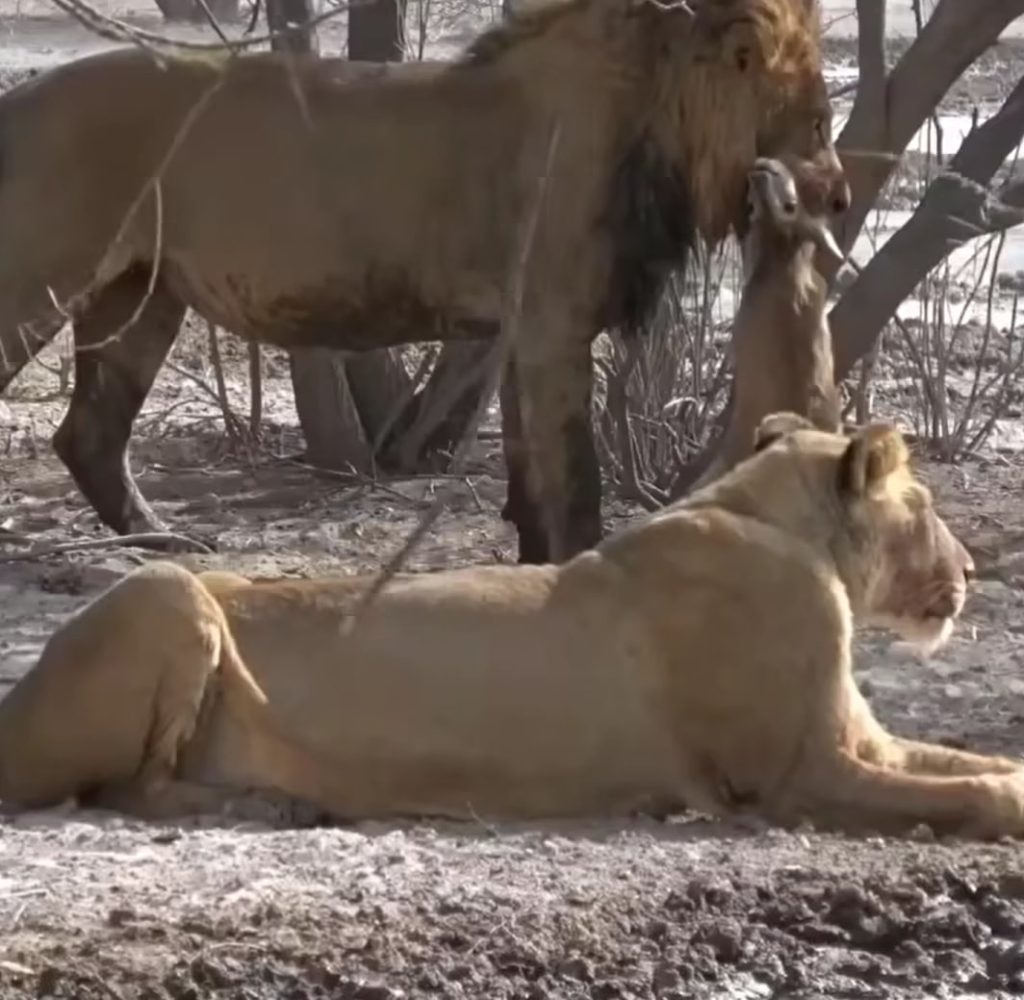In the dense jungle, a tiger moved silently through the underbrush. Its orange and black stripes provided perfect camouflage among the trees and shadows. The tiger’s keen senses were attuned to every sound and movement, its eyes locked onto a distant deer grazing unaware. Each step was calculated, minimizing noise to avoid alerting its prey. The tiger’s muscles tensed, ready to unleash its power. As it crept closer, the anticipation of the hunt grew, showcasing the predator’s incredible patience and skill in the art of stalking.

The tiger positioned itself downwind from a herd of deer, using the natural cover of tall grass to hide its approach. It watched the herd closely, identifying the weakest and most vulnerable target. When the moment was right, the tiger launched itself with explosive speed and strength. The deer, startled by the sudden attack, scattered in all directions. But the tiger’s focus remained on its chosen prey, closing the distance with powerful strides. The element of surprise gave the tiger a crucial advantage, demonstrating the effectiveness of its ambush strategy.

As the tiger broke from its cover, the hunt turned into a high-speed chase. The prey, a young deer, sprinted desperately to escape, zigzagging through the forest. The tiger’s powerful legs propelled it forward, its eyes fixed on the deer, ignoring all other distractions. The jungle echoed with the sounds of the pursuit, leaves rustling and branches snapping. Despite the deer’s agile maneuvers, the tiger’s sheer speed and determination closed the gap. The chase highlighted the tiger’s raw athleticism and relentless pursuit of its next meal.

In a dramatic burst of energy, the tiger launched itself at the fleeing deer. Its sharp claws extended, and its jaws opened wide, ready to deliver the decisive blow. The leap covered a remarkable distance, showcasing the tiger’s incredible physical prowess. The impact knocked the deer off balance, and the tiger’s powerful grip secured its hold. With a swift, precise bite to the neck, the hunt was over. The tiger’s mastery of timing and strength in this final leap demonstrated the lethal efficiency of its hunting technique.

The tiger stood over its fallen prey, its breathing heavy from the exertion of the chase. The jungle seemed to fall silent as the predator asserted its dominance. The kill was quick and efficient, minimizing the prey’s suffering. The tiger’s sharp teeth and strong jaws were perfectly adapted for this moment, severing vital arteries to ensure a swift end. The tiger paused for a moment, scanning its surroundings for any potential threats before beginning to feed. This act of predation was a stark reminder of the tiger’s role in the natural order.

With the deer securely in its grasp, the tiger began to feast. It tore into the flesh with its powerful jaws, savoring the fresh kill. The tiger’s rough tongue stripped away meat from the bones, consuming both muscle and organs for maximum nutrition. Each bite was deliberate, ensuring no part of the prey was wasted. The tiger’s solitary nature meant it ate alone, in a secure location away from potential scavengers. This meal was vital for maintaining its strength and energy, crucial for its survival in the wild.
Hunting was not just a skill but a necessity for the tiger’s survival. Each successful hunt required a combination of stealth, strength, and strategy. Young tigers learned these skills from their mothers, watching and mimicking their techniques. This education was crucial, as a tiger without hunting skills could not survive. The jungle was a challenging environment, and only the most adept hunters thrived. The tiger’s ability to secure prey demonstrated its mastery of its domain and its place at the top of the food chain.


